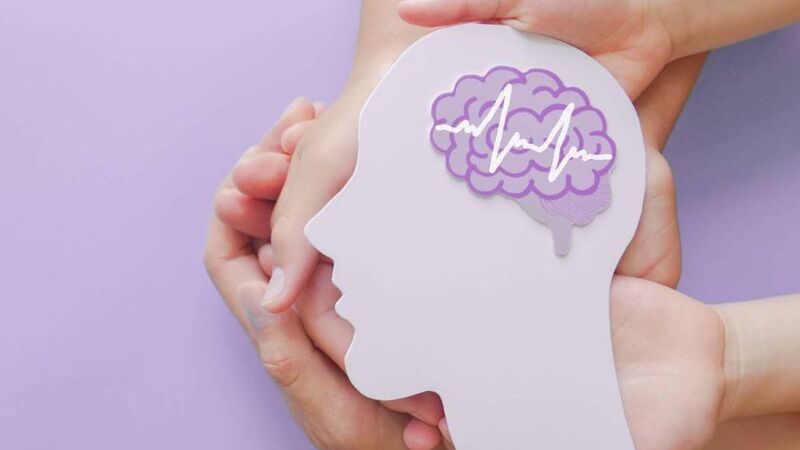The facts and the myths about ADHD

ADHD brains are interest-based nervous systems, says Mirin Mooney
For many people, ADHD still conjures up the image of a little boy bouncing around a classroom, unable to sit still, and causing trouble. But ADHD is far more complex than that. It exists across all genders, ages, and backgrounds. It doesn’t fade when childhood ends, it evolves. And it doesn’t look the same in everyone.
Adult ADHD
As global understanding of ADHD expands, many adults are discovering the way their brains work has a name: ADHD. After a lifetime of being told they’re too lazy, careless, forgetful, or not living up to their potential - discovering that there’s a reason they are the way they are, can be an incredible relief.
Simultaneously, this is often accompanied by the grief of what could have been had it been recognised sooner.
Nonetheless, a lifetime of being told they are too lazy or not trying hard enough, often results in the internalisation of these massages manifesting as shame, low self-esteem, and mental health difficulties. Unrecognised ADHDers start to believe they are fundamentally flawed, when actually, their brains are simply wired differently. With earlier recognition and the right supports, many of these same individuals could have thrived from a young age, in environments that played to their strengths rather than punished their differences.
An Interest-Based Nervous System
At its core, ADHD is about interest, not willpower. ADHD brains are interest-based nervous systems. If a task sparks interest, focus can be deep and intense (sometimes to the point of hyperfocus, where hours can pass in what feels like minutes). But if a task feels boring or meaningless, it can be incredibly difficult to get started, even on simple things.
This isn’t laziness, it’s a neurological difference in how dopamine (the brain chemical linked to motivation) functions. Telling someone with ADHD, “just try harder” is like telling someone with a broken leg to “just walk faster” - it’s not a solution.
More Than a List of Symptoms
ADHD is not one-size-fits-all. Some people primarily struggle with attention: losing track of time, being easily distracted, misplacing things, or having difficulty with organisation. Others experience more hyperactive or impulsive traits: talking a mile a minute, feeling restless, interrupting, or acting impulsively. And many have a combined presentation of both.
ADHD often overlaps with other neurodivergences, and about 20-30% of people with ADHD are also autistic. When these traits intersect, the presentation looks very different.
Simultaneously, ADHDers can be exceptionally creative, passionate, and energetic. When something captures their attention, they can produce extraordinary work at remarkable speed. Additionally, they can see patterns others miss, solve problems in unconventional ways, and bring a level of enthusiasm that energises teams and communities.
Many entrepreneurs, artists, and innovators credit their ADHD for their ability to take risks and think outside the box.
Myths
There are still many widespread myths such as ADHD is “just an excuse,” “overdiagnosed,” or “something kids grow out of.”
In reality, ADHD remains underdiagnosed in many groups, particularly in women, adults, and minority populations.
ADHDers are also often labelled as lazy or disorganised, yet just function differently. ADHD brains have structural and functional differences in areas that regulate attention, impulse control, and executive functioning.
Other ADHD myths claim it is caused by bad parenting, too much sugar or too much screen time. While some of these factors might exacerbate it, studies show there is a 70-80% genetic component - people are born with it.
ADHD comes with challenges and strengths. The biggest difficulty lies not in that ADHD brains are broken, but that society isn’t built to accommodate different neurotypes.
Inclusivity
ADHDers are often at the forefront of innovation and growth. Yet, we cannot pick and choose the good bits of neurodiversity and discard the rest. We cannot expect the creativity, problem-solving and passion without making workplaces, classrooms, and communities more inclusive and engaging. That might require more flexible ways of working, more engaging environments, varied learning styles in schools, or simply less judgment about how people focus and organise their lives.
Celebrating Neurodiversity
About 2% of the Irish population have a formal ADHD diagnosis, but the real number is likely higher. Many ADHD adults spend their life masking, by consciously or unconsciously hiding their struggles, attempting to fit in and appear normal. This is exhausting and can result in burnout, anxiety, or depression.
When ADHD goes unrecognised, it leads to frequent everyday struggles and mental health difficulties. On the other hand, recognising it can make a huge difference by helping people learn to work with their brains and bodies instead of constantly fighting against them. This enables them to truly thrive.
By deepening our understanding of ADHD and how it shows up in people’s lives, we can build a more inclusive society - where workplaces and education systems support all neurotypes rather than stigmatising those who are different.
Ultimately, ADHD awareness is about more than understanding, but creating environments that don’t make neurodivergent individuals feel wrong for being different.
To find out more about ADHD and available supports, visit www.adhdireland.ie







 App?
App?




